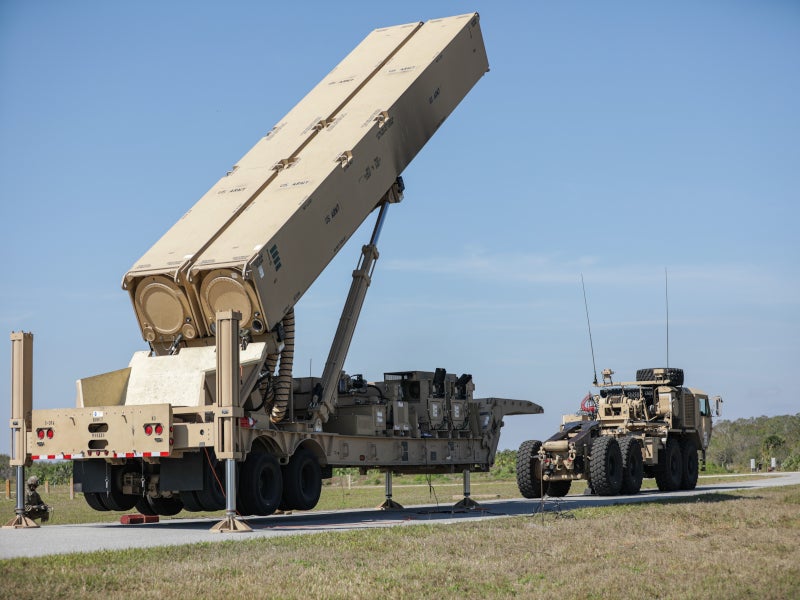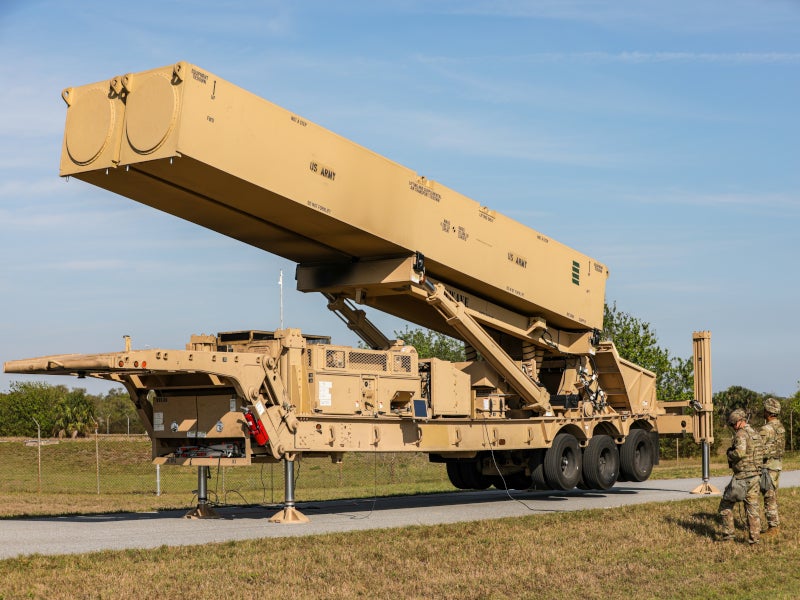The Long-Range Hypersonic Weapon (LRHW) is a land-based, truck-launched weapon system capable of firing long-range hypersonic missiles. It is being developed by global security and aerospace company Lockheed Martin, for the US armed forces.
LRHW is a strategic offensive weapon system designed to counter anti-access/area-denial capabilities, neutralise the enemy’s long-range fires, and effectively engage high-value and time-critical targets.
The system can launch ultrafast, manoeuvrable hypersonic missiles to the upper regions of the Earth’s atmosphere and make them stay there beyond the reach of air and missile defence systems, before striking the designated targets, so that adversaries do not receive an opportunity to respond timely.
Orders and deliveries
The US Army awarded Lockheed Martin a contract valued at approximately $347m as part of a multiyear hypersonic weapons development initiative in August 2019. The contract aimed to support the army’s effort to develop its long-range precision missile striking capability.
Lockheed Martin and its team collaborated with the Army Hypersonic Project Office, a division of the Army Rapid Capabilities and Critical Technologies Office, to undertake the development and integration of a prototype for a land-based hypersonic strike system.
The US Army first received the first prototype hardware for the LRHW system, also referred to as Dark Eagle, at the Joint Base Lewis-McChord, Washington DC, in October 2021.
In February this year, the army’s 1st Multi-Domain Task Force long-range fires battalion, 5th Battalion, and its 3rd Field Artillery Regiment, successfully deployed the LRHW system from the Joint Base Lewis-McChord in Washington DC to Cape Canaveral, Florida, covering more than 3,100 miles distance, during the Thunderbolt Strike exercise.
The deployment served as a comprehensive rehearsal of expeditionary hypersonic launch capabilities.
The exercise also played a vital role in testing and strengthening the crucial command and control connections between various entities, including the US Indo-Pacific Command, the US Strategic Command, the US Army Pacific, the Army Rapid Capabilities and Critical Technologies Office, and the 1st MDTF.
LRHW system design and features
The LRHW system comprises ground-launched missiles equipped with a common hypersonic glide body (C-HGB) and associated ground equipment.
The ground equipment includes four mobile transporter-erector-launchers capable of carrying two missiles each on modified M870A4 trailers, a battery operations centre (BOC) for command and control, and a BOC support vehicle.
The system has a reported firing range of 1,725 miles.
Missile details
The missile attached to the C-HGB is referred to as the All Up Round plus Canister (AUR+C). An LRHW battery comprises four TELs carrying eight AUR+Cs.
The hypersonic missiles can travel at a speed exceeding 3,800 miles per hour (Mach 5).
C-HGB details
The C-HGB is believed to be based on the Alternate Re-Entry System developed by the US Army and Sandia National Laboratories, according to a report by the Congressional Research Service, a public policy research arm of the US Congress.
The C-HGB employs a booster rocket motor to achieve speeds significantly beyond hypersonic, after which it discards. Its aerodynamic design improves the missile’s manoeuvrability, making it more difficult for adversaries to detect and intercept.
Contractors involved
While Lockheed Martin is the prime contractor for the project, other companies involved in the project include US-based engineering consultants Dynetics Technical Solutions and Penta Research, software engineering company Integration Innovation, aerospace and defence company Verity Integrated Systems, engineering and manufacturing services provider Martinez & Turek, and energy and defence company General Atomics.
American aerospace and defence companies General Dynamics, Moog, Northrop Grumman, and Raytheon are also engaged as subcontractors for the LRHW’s development and integration.
Dynetics, a subsidiary of Leidos, is responsible to produce C-HGB prototypes for the US’ army and navy.






